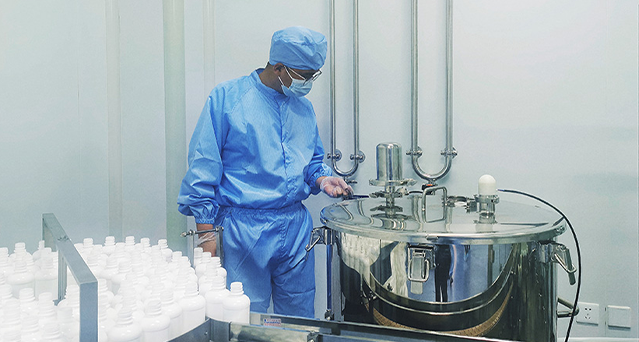
Sen . 30, 2024 15:29 Back to list
Understanding Coccidiosis in Chickens and Its Impact on Poultry Health
Understanding Coccidiosis in Chickens
Coccidiosis is a prevalent parasitic disease affecting poultry, particularly chickens, and is caused by single-celled protozoa belonging to the genus Eimeria. This disease is especially concerning in intensive poultry farming, where high-density living conditions can promote outbreaks. Understanding coccidiosis, its causes, symptoms, and prevention methods is crucial for farmers and poultry stakeholders to maintain healthy flocks and ensure optimal production.
What Causes Coccidiosis?
The protozoan parasites that cause coccidiosis are transmitted through contaminated litter, water, or feed. Chickens can ingest oocysts, the environmentally resistant eggs of the parasites, which then mature and invade the intestinal lining, leading to damage. There are several species of Eimeria that specifically affect chickens, with Eimeria tenella and Eimeria necatrix being among the most pathogenic. These parasites thrive in warm, moist environments, making flocks in confined spaces particularly vulnerable.
Symptoms of Coccidiosis
The clinical signs of coccidiosis can vary depending on the severity of the infection and the specific species of Eimeria involved. Common symptoms include
- Diarrhea Often bloody, which is perhaps the most prominent sign of coccidiosis. - Weight Loss Infected birds tend to experience poor weight gain due to decreased feed intake and nutrient absorption. - Lethargy Infected chickens may appear sluggish, showing reduced activity and social interaction. - Dehydration Due to excessive fluid loss from diarrhea, chickens may become dehydrated, leading to more severe health complications. - Sudden Death In severe cases, particularly in young birds, sudden death can occur without prior clinical signs.
Diagnosis and Treatment
Diagnosing coccidiosis typically involves a combination of observing clinical signs and performing laboratory tests, such as fecal examination to identify oocysts. Treatment often involves the use of coccidiostats, medications that inhibit the growth and reproduction of the parasites. Antimicrobials may also be used to prevent secondary infections resulting from the intestinal damage caused by the parasites.
Early intervention is critical, and in severe cases, supportive care, such as rehydration and nutritional support, may be necessary to help the affected birds recover
.que es la coccidiosis en gallinas suppliers

Prevention Strategies
Preventing coccidiosis requires a multifaceted approach, including
1. Good Hygiene Practices Regularly cleaning and disinfecting poultry houses and ensuring proper waste management can significantly reduce the spread of oocysts.
2. Dry Conditions Keeping litter dry can inhibit the survival of Eimeria oocysts, as they thrive in moist environments.
3. Management of Stocking Density Reducing the number of birds per square meter can help minimize stress and transmission rates among the flock.
4. Vaccination Live vaccines against certain Eimeria species are available and can help in controlling outbreaks, particularly in young chicks. These vaccines stimulate immunity without causing the disease.
5. Biosecurity Measures Implementing strict biosecurity protocols by minimizing traffic between flocks, controlling wild bird access, and preventing the introduction of infected birds are essential in preventing outbreaks.
Conclusion
Coccidiosis is a significant health challenge in poultry production, affecting the welfare of chickens and compromising farm profitability. By understanding its causes, symptoms, and preventive measures, poultry farmers can safeguard their flocks against this parasitic disease. Regular monitoring and prompt treatment can reduce the incidence of coccidiosis, ensuring the health and productivity of the birds while minimizing economic losses. With diligent management practices and education, the impact of coccidiosis can be effectively controlled.
-
Immunovital Fish Feed Factory | AI-Optimized Nutrition
NewsAug.03,2025
-
Quality Bacillus Coagulans BC30 Factory - Expert Production
NewsAug.02,2025
-
China Salivation AI with GPT-4 Turbo Features
NewsAug.01,2025
-
Epic Sepsis Factories: AI-Driven Detection with GPT-4 Turbo
NewsJul.31,2025
-
Acute Salpingitis and Oophoritis AI Factory
NewsJul.31,2025
-
Premium China Bacillus Subtilis Supplier & Factory Solutions
NewsJul.30,2025




